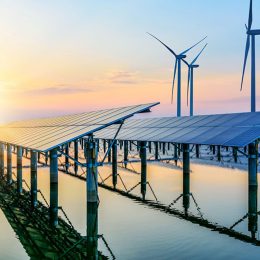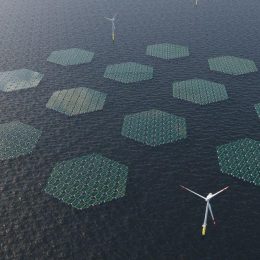Effects of surface water thermal energy for Rijksvastgoedbedrijf
Rijkswaterstaat wants to focus more on obtaining heat from surface water as a source of energy for heating and cooling buildings. This technology involves returning cold water to the surface water. The water temperature is changed and there is a possible impact on water quality. To prevent negative effects, Deltares worked with Techniplan to study the thermal effects and the impact on water quality and ecology in the surface water.
Scrutinising the thermal energy systems in place
Deltares examined the surface water thermal energy systems of the Maastoren, Port City Rotterdam, Capelle a/d IJssel collection centre and the Rijkswaterstaat Terneuzen district to determine the thermal effects in the surface water and the possible impact on water quality and the ecology. We looked at flowing waters such as rivers, and still waters such as canals and ditch systems. The introduction of surface water thermal energy systems means that, as a result of the circulation of the water in the system, water will enter the surface water. The impact can be marked in the case of small waters such as ponds and ditches.

Effect on still and flowing water
he study defined six water systems: large rivers, streams and small rivers, ports on large and small waters, canals and ditches. The effect was calculated of surface water thermal energy systems at different levels of heat demand. A new calculation tool was developed for still waters here; a tool was already in place for flowing waters. Existing plant for surface water thermal energy and the results of detailed model calculations for hot- and cold-water releases were compared with the results of the RWS calculation tool and a ‘fast scan’ method.
Temperature of water hardly changes
Neither type of plant has any marked thermal effect on large flowing waters. An increase of more than 1°C was found only in ports with small flowing waters when heat was released in the summer by a large system. The effect on the water temperature can be reduced by increasing the distance between the release and intake points. This can be done by creating a physical distance but also by adopting an intelligent approach to selecting the release and intake points.
Water quality and ecology
Due to the scarcity of data, this study could not establish the impact on water quality and the ecology. In order to determine the thermal effects of hot- and cold-water releases better, changes will be required to the current calculation methods. In any case, they will have to comply with the new Water Framework Directive, the aim of which is to safeguard the quality of surface water and groundwater in Europe. This is important in order to establish an accurate national picture of the effects of cold-water releases. That will be needed to establish greater confidence in, and more familiarity with, this new source of energy.



